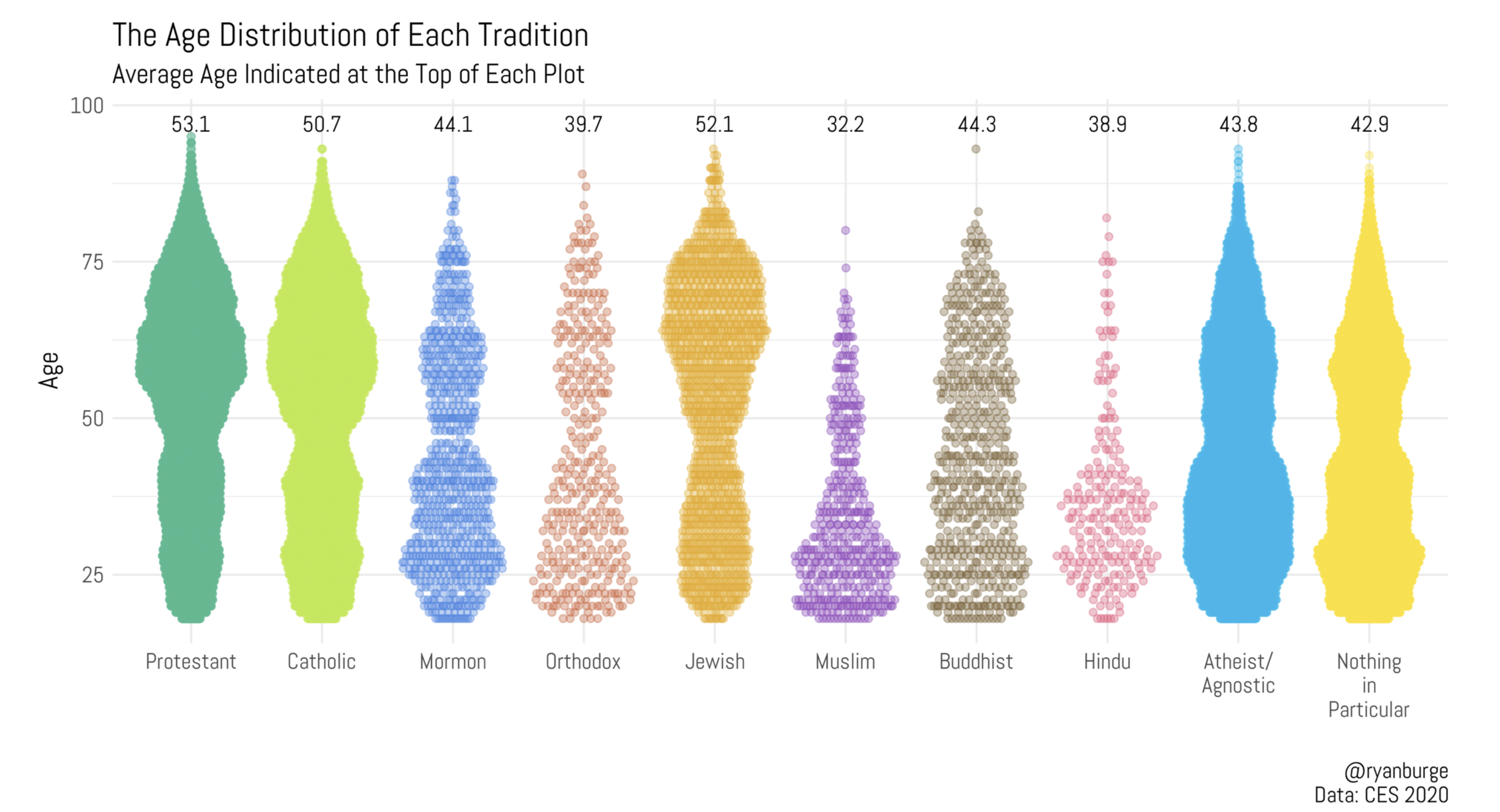A team of economists from Wellesley College and the University of Maryland recently published a working paper that focused on a peculiar puzzle facing the United States: declining birth rates.
More particularly, the team of researchers was trying to understand why birth rates continued to fall even after the economy was recovering from the Great Recession of 2007. Those economists concluded that one of the biggest factors was shifting priorities among younger Americans — away from raising children and toward career and travel aspirations.
But fertility is obviously incredibly multifaceted. The decision to become a parent is often one that is made with a number of factors in mind. Young adults have to consider their educational plans, the amount of income they would have available to pay for a child and how to handle childcare responsibilities once they become parents.
One factor that can have a tremendous impact on this decision is religion.
Every major religious tradition on Earth encourages reproduction, and thus there can be a theological nudge for people to have children. But a local religious community can also make the decision easier for potential parents by offering up a safety net that can provide financial support or easy access to caregivers for babies and children in the congregation.
Clearly, it’s in the best interest of religious groups to encourage their young families to have children if they want to ensure the long-term viability of their traditions. It’s no secret that families with children are the easiest pathway to ensure that a church, mosque or synagogue will be able to sustain itself for decades to come. But which traditions are doing a good job of having children, and which ones aren’t? And what does that tell us about the future of American religion?
The Cooperative Election Study asked respondents if they were the parent or guardian of a child under the age of 18. The results of this single question offer a tremendous amount of insight into whether individuals have children and what age that is most likely to occur.
For instance, Hindus have the highest peak fertility. About 80% of Hindus in their early 40s have children, with members of the Church of Jesus Christ of Latter-day Saints not far behind. However, it’s notable that peak fertility for Latter-day Saints — still widely known as Mormons — is about five years earlier than it is for Hindus. Protestants and Catholics both have a very similar pattern to each other: The peak age for having children is about 40 years old, with about 60% of both traditions being parents at this age.
Those that lag behind are worth considering as well. The group that is the least likely to have children are atheists and agnostics. They hit peak fertility around 42 years old, when about 40% of them have children. It’s noteworthy that, according to this data, potentially half of atheists and agnostics never reproduce. Thus, for these groups to grow, they have to rely on conversion more than retention.
In terms of the number of children per family, there are also large disparities based on tradition. Looking just at people between the ages of 35 and 45 years old — when fertility peaks — it’s clear that Latter-day Saints and Muslims are far above average. The typical American is the parent of about two children. For Mormons and Muslims, it’s closer to three. Christian groups fall right around the mean, and it’s worth pointing out that Protestants have the same number of children as Catholics on average.
However, the number of children that are born into a tradition is only part of the equation. If a religious group doesn’t have many children but the average member is in their 30s or 40s, there’s little cause for concern. That’s for two reasons: One is that the members are in their most fertile years and could still reproduce. The other is that it’s unlikely that a large portion of the congregation will die off in the near future, which would leave a leadership and financial hole to be filled.
For Christian traditions, there are warning signs in the data.
The average Protestant is now 53 years old — the highest average age of any religious tradition. Catholics and Jews aren’t far behind at 52 and 51 years old, respectively. The youngest traditions are from the smaller faith groups in the United States, like the average age of 44 for Latter-day Saints, 39 for Hindus and 32 for Muslims.
Clearly, for these younger groups, there is a bright future ahead.
CONTINUE READING: “The Future Of American Religion: Birth Rates Show Who's Having More Kids” by Ryan Burge at Religion Unplugged.
FIRST IMAGE: Uncredited illustration with “We should teach our children about different religions, no matter what our beliefs are” feature at Parent24 website.



